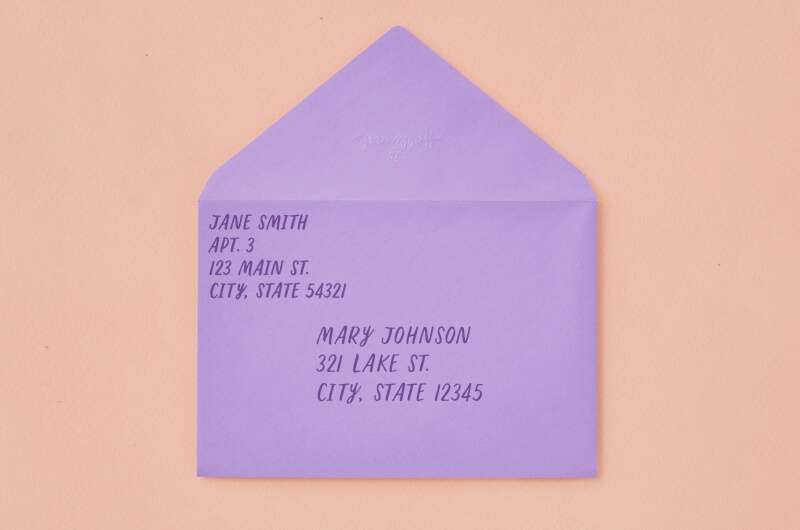How to write address on envelope
Writing an address on an envelope is straightforward but important to get right to ensure proper delivery. Start with the recipient’s name on the first line. On the second line, write the street address, including any apartment or suite numbers. The third line should include the city, state or province, and ZIP or postal code. If sending internationally, add the country name on the final line. Ensure the address is centered on the envelope, and use clear, legible handwriting or print. In the top left corner, add your return address following the same format, which helps in case the mail needs to be returned to you.
- Choosing the Right Envelope
- Writing the Recipient’s Address
- Adding the Sender’s Address
- Handwriting vs. Printing the Address
- Conclusion
- FAQs

Choosing the Right Envelope
- Size and Dimensions Select an envelope that fits your contents comfortably without folding or crumpling.2. Material and Durability: Choose an envelope made of sturdy material to protect the contents during transit.
3. Security Features: Opt for envelopes with security features such as tamper-evident seals or security tints for sensitive documents.
4. Closure Type: Decide between gummed, self-sealing, or clasp closures based on convenience and security needs.
5. Professional Appearance: Use high-quality, professional-looking envelopes for business or formal correspondence.
6. Design and Color: Consider the design and color to match the tone and purpose of your correspondence, ensuring it’s appropriate for the recipient.
7. Window vs. Non-Window: Determine if you need a window envelope for pre-printed addresses or a non-window envelope for handwritten or custom labels.
8. Cost and Quantity: Balance cost with quality, especially if purchasing in bulk, to ensure you get the best value for your needs.
Writing the Recipient’s Address
- Recipient’s Name:
- Begin with the recipient’s full name. If applicable, include titles like Mr., Mrs., Dr., or professional titles.2. Street Address:
- Write the street address on the next line. Include apartment or suite numbers, if any.3. City, State, and ZIP Code:
- On the following line, write the city, state or province, and the ZIP or postal code. Use the standard abbreviations for states and provinces.4. Country:
- If sending internationally, add the country name on the last line.5. Formatting:
- Center the address on the envelope. Ensure each line is clearly written and easy to read.
Adding the Sender’s Address
- Placement:
- The sender’s address should be placed in the top left corner of the envelope.
2. Sender’s Name:
- Begin with your full name.
3. Street Address:
-
- Write your street address on the next line. Include apartment or suite numbers, if any.
4. City, State, and ZIP Code:
- On the following line, write your city, state or province, and ZIP or postal code. Use standard abbreviations for states and provinces.
5. Country:
- If sending internationally, include your country name on the last line.
Handwriting vs. Printing the Address
- Legibility:
- Handwriting: Ensure clear, legible handwriting to avoid delivery issues. Use block letters if your cursive is hard to read.
- Printing: Printed addresses are typically more legible and professional, reducing the risk of misdelivery.
2. Formality:
- Handwriting: Adds a personal touch, suitable for informal or personal correspondence.
- Printing: More formal and suitable for business or professional communications.
3. Consistency:
- Handwriting: Variations in style can occur, which might affect readability.
- Printing: Provides a consistent and clean appearance, especially when using a printer.4. Effort:
- Handwriting: Requires more time and effort, especially for multiple envelopes.
- Printing: Faster and more efficient, especially for bulk mailings.5. Customization:
- Handwriting: Allows for easy customization and personal notes.
- Printing: Less flexible for on-the-fly changes but ideal for standardization.
Conclusion
Choosing the right method for addressing envelopes—whether handwriting or printing—depends on the nature of your correspondence and the impression you wish to convey. Handwriting adds a personal and heartfelt touch, ideal for personal letters and informal communications. Printing, on the other hand, ensures legibility and a professional appearance, making it suitable for business and formal correspondence. Whichever method you choose, ensure clarity, accuracy, and a neat presentation to facilitate smooth delivery and create a positive impression.
FAQs
Q: 1.What is the correct order for writing an address on an envelope?
Ans::Start with the recipient’s full name, followed by the street address or P.O. box, then the city, state, and ZIP code. If international, the country name should be on the last line.
Q: 2Where should the recipient’s address be placed on the envelope?
Ans: The recipient’s address should be placed in the center of the envelope, both vertically and horizontally.
Q:3Where should the sender’s address be placed?
Ans: The sender’s address, also known as the return address, should be written in the top left corner of the envelope.
Q:4Should the address be handwritten or printed?
Ans: Both handwritten and printed addresses are acceptable. However, printed addresses often provide better legibility, which is crucial for accurate delivery.